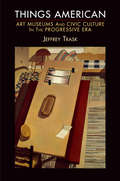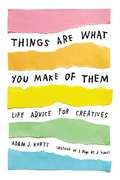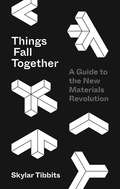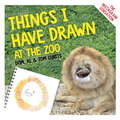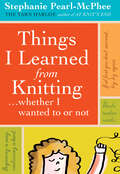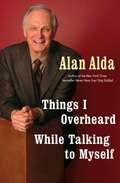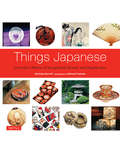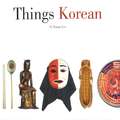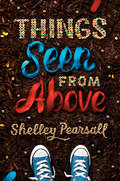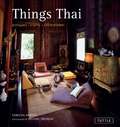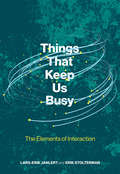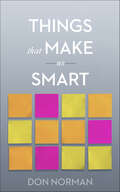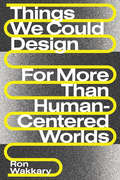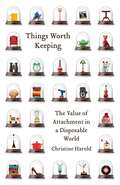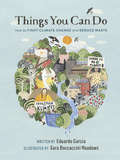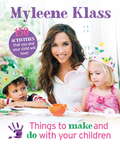- Table View
- List View
Things American: Art Museums and Civic Culture in the Progressive Era (The Arts and Intellectual Life in Modern America)
by Jeffrey TraskAmerican art museums of the Gilded Age were established as civic institutions intended to provide civilizing influences to an urban public, but the parochial worldview of their founders limited their democratic potential. Instead, critics have derided nineteenth-century museums as temples of spiritual uplift far removed from the daily experiences and concerns of common people. But in the early twentieth century, a new generation of cultural leaders revolutionized ideas about art institutions by insisting that their collections and galleries serve the general public.Things American: Art Museums and Civic Culture in the Progressive Era tells the story of the civic reformers and arts professionals who brought museums from the realm of exclusivity into the progressive fold of libraries, schools, and settlement houses. Jeffrey Trask's history focuses on New York's Metropolitan Museum of Art, which stood at the center of this movement to preserve artifacts from the American past for social change and Americanization. Metropolitan trustee Robert de Forest and pioneering museum professional Henry Watson Kent influenced a wide network of fellow reformers and cultural institutions. Drawing on the teachings of John Dewey and close study of museum developments in Germany and Great Britain, they expanded audiences, changed access policies, and broadened the scope of what museums collect and display. They believed that tasteful urban and domestic environments contributed to good citizenship and recognized the economic advantages of improving American industrial production through design education. Trask follows the influence of these people and ideas through the 1920s and 1930s as the Met opened its innovative American Wing while simultaneously promoting modern industrial art.Things American is not only the first critical history of the Metropolitan Museum. The book also places museums in the context of the cultural politics of the progressive movement—illustrating the limits of progressive ideas of democratic reform as well as the boldness of vision about cultural capital promoted by museums and other cultural institutions.
Things Are What You Make of Them: Life Advice for Creatives
by Adam J. KurtzInsights and inspiration for anyone who makes art (or anything else)The Ultimate BuzzFeed Books Gift Guide - Official SelectionFrom the creative mind and heart of designer Adam J. Kurtz comes this upbeat rallying cry for creators of all stripes. Expanding on a series of popular essays, this handwritten and heartfelt book shares wisdom and empathy from one working artist to others. Perforated tear-and-share pages make it easy to display the most crucial reminders or to pass a bit of advice on to someone who needs it.As wry and cheeky as it is empathic and empowering, this deceptively simple, vibrantly full-color book will be a touchstone for writers, artists, entrepreneurs, and anyone else who wants to be more creative--even when it would be easier to give up and act normal.
Things Become Other Things: A Walking Memoir
by Craig ModA transformative 300-mile walk along Japan&’s ancient pilgrimage routes and through depopulating villages inspires a heartrending remembrance of a long-lost friend, documented in poignant, imaginative prose and remarkable photography.&“An epic, exquisitely detailed journey, on foot, through a rural Japan few of us are likely to experience. Uniquely unforgettable.&”—William Gibson, New York Times bestselling author of NeuromancerPhotographer and essayist Craig Mod is a veteran of long solo walks. But in 2021, during the pandemic shutdown of Japan&’s borders, one particular walk around the Kumano Kodō routes—the ancient pilgrimage paths of Japan&’s southern Kii Peninsula—took on an unexpectedly personal new significance. Mod found himself reflecting on his own childhood in a post-industrial American town, his experiences as an adoptee, his unlikely relocation to Japan at nineteen, and his relationship with one lost friend, whose life was tragically cut short after their paths diverged. For Mod, the walk became a tool to bear witness to a quiet grace visible only when &“you&’re bored out of your skull and the miles left are long.&”Tracing a 300-mile-long journey, Things Become Other Things folds together history, literature, poetry, Shinto and Buddhist spirituality, and contemporary rural life in Japan via dozens of conversations with aging fishermen, multi-generational inn owners, farmers, and kissaten cafe &“mamas.&” Along the way, Mod communes with mountain fauna, marvels over evidence of bears and boars, and hopscotches around leeches. He encounters whispering priests and foul-mouthed little kids who ask him, &“Just what the heck are you, anyway?&” Through sharp prose and his curious archive of photographs, he records evidence of floods and tsunamis, the disappearance of village life on the peninsula, and the capricious fecundity of nature.Things Become Other Things blends memoir and travel writing at their best, transporting readers to an otherwise inaccessible Japan, one made visible only through Mod&’s unique bicultural lens.
Things Chinese
by Michael Freeman Ronald G. KnappA source of fascination to the West, China's renowned art objects and traditional manufactured products have long been sought by collectors. Things Chinese presents sixty distinctive items that are typical of Chinese culture and together present a window onto the people, the history and the society of the world's largest nation.Featuring descriptions and full-color photographs, the history, cultural significance and customs surrounding these objects and their importance becomes clear. Items covered include:Bamboo furnitureIvory carvingSnuff BottleMooncake mouldsMusical InstrumentsMahjong setsFengshui compasses
Things Fall Together: A Guide to the New Materials Revolution
by Skylar TibbitsFrom the visionary founder of the Self-Assembly Lab at MIT, a manifesto for the dawning age of active materialsThings in life tend to fall apart. Cars break down. Buildings fall into disrepair. Personal items deteriorate. Yet today's researchers are exploiting newly understood properties of matter to program materials that physically sense, adapt, and fall together instead of apart. These materials open new directions for industrial innovation and challenge us to rethink the way we build and collaborate with our environment. Things Fall Together is a provocative guide to this emerging, often mind-bending reality, presenting a bold vision for harnessing the intelligence embedded in the material world.Drawing on his pioneering work on self-assembly and programmable material technologies, Skylar Tibbits lays out the core, frequently counterintuitive ideas and strategies that animate this new approach to design and innovation. From furniture that builds itself to shoes printed flat that jump into shape to islands that grow themselves, he describes how matter can compute and exhibit behaviors that we typically associate with biological organisms, and challenges our fundamental assumptions about what physical materials can do and how we can interact with them. Intelligent products today often rely on electronics, batteries, and complicated mechanisms. Tibbits offers a different approach, showing how we can design simple and elegant material intelligence that may one day animate and improve itself—and along the way help us build a more sustainable future.Compelling and beautifully designed, Things Fall Together provides an insider's perspective on the materials revolution that lies ahead, revealing the spectacular possibilities for designing active materials that can self-assemble, collaborate, and one day even evolve and design on their own.
Things From the Flood
by Simon StålenhagThe basis for the new Amazon Prime Original Series! From the author of the imaginative and &“awe-inspiring&” (New York Journal of Books) narrative art book The Electric State comes the haunting sequel to his remarkable Tales from the Loop.Welcome back to the Loop. In 1954, the Swedish government ordered the construction of the world&’s largest particle accelerator in the pastoral countryside of Mälaröarna. The local population called this marvel of technology The Loop and celebrated its completion. But Mälaröarna and the world would never be the same. Infused with strange machines and unfathomable creatures, Things from the Flood is transcendent look at technology that will stay with you long after you turn the final page.
Things I Have Drawn: At the Zoo
by Tom CurtisKIDS' DRAWINGS HILARIOUSLY BROUGHT TO LIFE.Have you ever wondered what the world would look like if children's drawings were real? Well, wonder no more. Global Instagram sensation THINGS I HAVE DRAWN does just that - and the results are AMAZING.8-year-old Dom and 6-year-old Al are brothers who love to doodle, and then Dad Tom painstakingly transforms their creations into photorealistic scenes. In this book, join the family on a trip to the zoo and laugh your socks off at all of the weird and wonderful creatures, including a gurning goat, a terrifying polar bear and a rather smug looking flamingo. Spectacularly funny and disturbing, this book is packed with previously unseen material and the brilliant before and after images that have made @thingsihavedrawn such a cult hit.
Things I Learned From Knitting: ...whether I wanted to or not
by Stephanie Pearl-McPheeWith a knitter’s perspective, Stephanie Pearl-McPhee describes the astonishing wisdom and hard-to-swallow truths that are embedded in everyday clichés. You’ll laugh with Pearl-McPhee as she realizes that “babies grow” after spending nights knitting a now-too-small sweater. “Beginning is easy, continuing is hard” takes on a new meaning to the knitter who has five projects going, but wants to start another. The next time you drop a stitch, take a cue from this insightful collection and remember, “if at first you don’t succeed, try, try again.”
Things I Overheard While Talking to Myself
by Alan AldaPicking up where his bestselling memoir, Never Have Your Dog Stuffed, left off–having been saved by emergency surgery after nearly dying on a mountaintop in Chile–beloved actor and acclaimed author Alan Alda offers an insightful and funny look at some impossible questions he’s asked himself over the years: What do I value? What, exactly, is the good life? (And what does that even mean?) Here, Alda listens in on things he’s heard himself saying at critical points in his life–from the turbulence of the sixties, to his first Broadway show, to the birth of his children, to the ache of September 11, and beyond. Reflecting on the transitions in his life and in all our lives, he notices that “doorways are where the truth is told,” and wonders if there’s one thing–art, activism, family, money, fame–that could lead to a “life of meaning. ” In a book that is candid, wise, and as questioning as it is incisive, Alda amuses and moves us with his uniquely hilarious meditations on questions great and small.
Things I Wish My Mother Had Told Me: Lessons in Grace and Elegance
by Lucia Van Der PostPacked full of golden rules from one of Britain's most stylish women, Things I Wish My Mother Had Told Me is a woman's companion for life. Lucia van der Post reveals the secrets of dressing stylishly with advice on everything from how to organise your wardrobe, what to wear to travel and where to buy delicious underwear, great cashmere and sassy skirts. Practical health and beauty tips will help you to choose a sophisticated scent, get fitter and decide whether cosmetic surgery is for you.Once you've mastered looking fantastic, learn how to add some elegance to other areas of your life. Discover great shortcuts to entertaining your guests as well as suggestions, from designers around the world, on how to make your home match the elegant new you. With advice on relationships, motherhood and how to juggle work, love and children, this is the essential handbook for women of all ages. Whether you are just starting out in life or want to age gracefully and make 60 the new 40, let Lucia van der Post guide you towards a new life and a new you with a touch of style.
Things Japanese
by Michael Freeman Nicholas BornoffBeautifully crafted samurai swords; exquisitely carved netsuke toggles; elegant wooden tansu chests; elaborate tea ceremony implements; fabulously expensive silk-and-gold embroidered kimonos. All of these highly recognizable Japanese objects are imbued with a sense of history and artistry, as well as a unique Japanese aesthetic sense that easily reaches across cultural boundaries. In Things Japanese: Everyday Objects of Extraordinary Beauty and Significance, author Nicholas Bornoff and photographer Michael Freeman examine over 60 traditional objects that are definitively, uniquely Japanese, demonstrating their significance and relevance for a modern Western audience.In this delightful book, each object is shown and described in loving detail-placed within its broader historical and cultural context as an everyday item used by real people in traditional Japan. Each item is listed under its Japanese and English name-and illustrated in glorious, full-color photographs to highlight its great artistry and craftsmanship. Things Japanese is the perfect book for the antique lover in your life, or anyone interested in the art, culture and history of Japan.
Things Japanese
by Nicholas BornoffBeautifully crafted samurai swords; exquisitely carved netsuke toggles; elegant wooden tansu chests; elaborate tea ceremony implements; fabulously expensive silk-and-gold embroidered kimonos. All of these highly recognizable Japanese objects are imbued with a sense of history and artistry, as well as a unique Japanese aesthetic sense that easily reaches across cultural boundaries. In Things Japanese: Everyday Objects of Extraordinary Beauty and Significance, author Nicholas Bornoff and photographer Michael Freeman examine over 60 traditional objects that are definitively, uniquely Japanese, demonstrating their significance and relevance for a modern Western audience. In this delightful book, each object is shown and described in loving detail-placed within its broader historical and cultural context as an everyday item used by real people in traditional Japan. Each item is listed under its Japanese and English name-and illustrated in glorious, full-color photographs to highlight its great artistry and craftsmanship. Things Japanese is the perfect book for the antique lover in your life, or anyone interested in the art, culture and history of Japan.
Things Korean
by O-Young Lee John HolsteinThings Korean is a useful guide to traditional life in Korea, presented in an accessible and attractive format. O-Young Lee, former Korean Minister of Culture gives us a survey of native objects from Korea, from totems(Changsung) to hair-pins(binyo), crock pots(Changdokdae) to temple bells(Jong), scissors(Kawi) to graves(mudon) explaining their significance and place in everyday Korean life.Each item in the book is listed under its English and Korean name; a glossary is provided to further assist the reader. Lavishly illustrated with more than 100 color illustrations, Things Korean is a magnificent celebration of Korean culture.
Things Korean
by O-Young Lee John HolsteinThings Korean is a useful guide to traditional life in Korea, presented in an accessible and attractive format. O-Young Lee, former Korean Minister of Culture gives us a survey of native objects from Korea, from totems(Changsung) to hair-pins(binyo), crock pots(Changdokdae) to temple bells(Jong), scissors(Kawi) to graves(mudon) explaining their significance and place in everyday Korean life.Each item in the book is listed under its English and Korean name; a glossary is provided to further assist the reader. Lavishly illustrated with more than 100 color illustrations, Things Korean is a magnificent celebration of Korean culture.
Things Seen from Above
by Shelley PearsallA shift in perspective can change everything. This brilliant new novel from the author of The Seventh Most Important Thing celebrates kids who see the world a little differently.April is looking for an escape from the sixth-grade lunch hour, which has become a social-scene nightmare, so she signs up to be a "buddy bench monitor" for the fourth graders' recess.Joey Byrd is a boy on the fringes, who wanders the playground alone, dragging his foot through the dirt. But over time, April realizes that Joey isn't just making random circles. When you look at his designs from above, a story emerges... Joey's "bird's eye" drawings reveal what he observes and thinks about every day.Told in alternating viewpoints--April's in text and Joey's mostly in art--the story gives the "whole picture" of what happens as these two outsiders find their rightful places.
Things Shouldn't Be So Hard
by Beth GarrabrantA collection of photos examining all the profundity and sameness of youth by the acclaimed photographer best known for her work with Taylor Swift.Through her work with Taylor Swift—shooting the covers and promotional photos for her last several albums—photographer Beth Garrabrant has created imagery beloved by millions. Apart from her work with Swift, Garrabrant has spent the past two decades devoted to an ambitious project: documenting young people around the country. At their schools and churches, in their kitchens and bedrooms, at their proms and sporting events and part-time jobs, at amusement parks and in the backseats of cars where they spend so much of their idle time. In Things Shouldn&’t Be So Hard, the first collection of her work, Garrabrant movingly captures what it&’s like to be not yet an adult in America: specifically the contradictory and often simultaneous states of camaraderie and isolation, confidence and insecurity, love and heartbreak, hope and despair. Featuring an introduction by lauded filmmaker Kelly Reichardt—who likens Garrabrant to modern masters such as William Eggleston and Robert Adams—this gorgeously designed four-color book showcases one of the most talented and soulful visual artists working today.
Things Thai: Antiques, Crafts, Collectibles
by Michael Freeman Tanistha DansilpThings Thai presents over 60 different items from Thailand along with extensive cultural and historical background information.Each is a collectible in its own right, and has some cultural relevance or a story to tell. <P><P>Each object, be it a work of art, an emblem or something more everyday, represents an aspect of Thai life. Some items are devotional objects inspired by Theravada Buddhism, others are representative of the strong crafts tradition in the country; some have distinctive Thai design motifs, such as the kanok flame and vegetal motifs, others are simply pieces of clothing or jewelry-but all have a distinct bearing on Thai customs and culture.Each item is photographed separately and detailed text explains its historical importance and cultural significance.
Things That Keep Us Busy: The Elements of Interaction (The\mit Press Ser.)
by Erik Stolterman Lars-Erik JanlertAn investigation of interactivity, interfaces and their design, and the webs of complex interactions that result.We are surrounded by interactive devices, artifacts, and systems. The general assumption is that interactivity is good—that it is a positive feature associated with being modern, efficient, fast, flexible, and in control. Yet there is no very precise idea of what interaction is and what interactivity means. In this book, Lars-Erik Janlert and Erik Stolterman investigate the elements of interaction and how they can be defined and measured. They focus on interaction with digital artifacts and systems but draw inspiration from the broader, everyday sense of the word.Viewing the topic from a design perspective, Janlert and Stolterman take as their starting point the interface, which is designed to implement the interaction. They explore how the interface has changed over time, from a surface with knobs and dials to clickable symbols to gestures to the absence of anything visible. Janlert and Stolterman examine properties and qualities of designed artifacts and systems, primarily those that are open for manipulation by designers, considering such topics as complexity, clutter, control, and the emergence of an expressive-impressive style of interaction. They argue that only when we understand the basic concepts and terms of interactivity and interaction will we be able to discuss seriously its possible futures.
Things That Make Us Smart
by Don NormanBy the author of THE DESIGN OF EVERYDAY THINGS. Insightful and whimsical, profoundly intelligent and easily accessible, Don Norman has been exploring the design of our world for decades, exploring this complex relationship between humans and machines. In this seminal work, fully revised and updated, Norman gives us the first steps towards demanding a person-centered redesign of the machines we use every day. Humans have always worked with objects to extend our cognitive powers, from counting on our fingers to designing massive supercomputers. But advanced technology does more than merely assist with memory—the machines we create begin to shape how we think and, at times, even what we value. In THINGS THAT MAKE US SMART, Donald Norman explores the complex interaction between human thought and the technology it creates, arguing for the development of machines that fit our minds, rather than minds that must conform to the machine.
Things We Could Design: For More Than Human-Centered Worlds (Design Thinking, Design Theory)
by Ron WakkaryHow posthumanist design enables a world in which humans share center stage with nonhumans, with whom we are entangled.Over the past forty years, designers have privileged human values such that human-centered design is seen as progressive. Yet because all that is not human has been depleted, made extinct, or put to human use, today's design contributes to the existential threat of climate change and the ongoing extinctions of other species. In Things We Could Design, Ron Wakkary argues that human-centered design is not the answer to our problems but is itself part of the problem. Drawing on philosophy, design theory, and numerous design works, he shows the way to a relational and expansive design based on humility and cohabitation. Wakkary says that design can no longer ignore its exploitation of nonhuman species and the materials we mine for and reduce to human use. Posthumanism, he argues, enables a rethinking of design that displaces the human at the center of thought and action. Weaving together posthumanist philosophies with design, he describes what he calls things--nonhumans made by designers--and calls for a commitment to design with more than human participation. Wakkary also focuses on design as "nomadic practices"--a multiplicity of intentionalities and situated knowledges that shows design to be expansive and pluralistic. He calls his overall approach "designing-with": the practice of design in a world in which humans share center stage with nonhumans, and in which we are bound together materially, ethically, and existentially.
Things We Forget: Little Reminders of What Matters Most
by J. J. PennSometimes the most important things in life are the ones we forget.This inspiring collection of hand-drawn notes began with a simple premise: It’s worth remembering what’s most important in life, even when you can’t see the bigger picture. From his very first note, written hastily in the backseat of a taxi for the benefit of the next passenger (it said “Never give up”), J. J. Penn has inspired both passersby and devoted online fans with his uplifting and quirky reminders. Every day since then, Penn’s simple notes, created with nothing more than a pen and a sticky pad, have been photographed and then left in public—on a park bench, at a bus stop—anonymously and hopefully, to spread a little goodwill and brighten someone’s day.Collected in book form, they serve as a heartfelt reminder about what matters most.
Things Worth Keeping: The Value of Attachment in a Disposable World
by Christine HaroldA timely examination of the attachments we form to objects and how they might be used to reduce waste Rampant consumerism has inundated our planet with pollution and waste. Yet attempts to create environmentally friendly forms of consumption are often co-opted by corporations looking to sell us more stuff. In Things Worth Keeping, Christine Harold investigates the attachments we form to the objects we buy, keep, and discard, and explores how these attachments might be marshaled to create less wasteful practices and balance our consumerist and ecological impulses. Although all economies produce waste, no system generates as much or has become so adept at hiding its excesses as today&’s mode of global capitalism. This book suggests that managing the material excesses of our lives as consumers requires us to build on, rather than reject, our desire for and attraction to objects. Increasing environmental awareness on its own will be ineffective at reversing ecological devastation, Harold argues, unless it is coupled with a more thorough understanding of how and why we love the things that imbue our lives with pleasure, meaning, and utility. From Marie Kondo&’s method for decluttering that asks whether the things in our lives &“spark joy&” to the advent of emotionally durable design, which seeks to reduce consumption and waste by increasing the meaningfulness of the relationship between user and product, Harold explores how consumer psychology and empathetic design can transform our perception of consumer products from disposable to interconnected. An urgent call for rethinking consumerism, Things Worth Keeping shows that by recognizing our responsibility for the things we produce, we can become better stewards of the planet.
Things You Can Do: How to Fight Climate Change and Reduce Waste
by Eduardo GarciaLearn what you can do right now to reduce your carbon footprint with this inspiring, accessible, stunningly illustrated book based on Eduardo Garcia&’s popular New York Times column. &“This beautiful and practical book on the climate crisis is for people of all ages, packed with wonderful pictures, powerful stats, and sound advice.&”—Mike Berners-Lee, author of There Is No Planet BAward-winning climate journalist Eduardo Garcia offers a deeply researched and user-friendly guide to the things we can do every day to fight climate change. Based on his popular New York Times column &“One Thing You Can Do,&” this fully illustrated book proposes simple solutions for an overwhelming problem. No lectures here—just accessible and inspiring ideas to slash emissions and waste in our daily lives, with over 350 explanatory illustrations by talented painter Sara Boccaccini Meadows.In each chapter, Garcia digs into the issue, explaining how everyday choices lead to carbon emissions, then delivers a wealth of &“Things You Can Do&” to make a positive impact, such as:• Eat a climate-friendly diet• Reduce food waste• Cool your home without an air conditioner• Save energy at home• Adopt zero-waste practices• Increase the fuel efficiency of your car• Buy low-carbon pet food• Hack your toilet to save water• Slash the carbon footprint of your online shoppingDelivering a decisive hit of knowledge with every turn of the page, Things You Can Do is the book for people who want to know more—and do more—to save the planet.
Things to Look Forward To: 52 Large and Small Joys for Today and Every Day
by Sophie BlackallEveryone needs things to look forward to: big things and small things, on good days and on bad days, whether we actively create delight for ourselves or simply allow it to enter our lives.In these pages, beloved author and illustrator Sophie Blackall has gathered a collection of joys for all of us—reminders that every day the sun comes up and new babies are born. She includes suggestions that you bake muffins for a friend, or draw a face on an egg and put it in the fridge where it will smile at you each time you open the door. With wisdom, whimsy, and compassion, the 52 illustrated ideas in this book offer moments of uplift and serendipity for yourself and your loved ones.A message of hope and solace in hard times and of joyful anticipation at times of new beginnings—whether you're grieving a loss or starting a new chapter—and for all the days in between—Things to Look Forward to is full of gentle reminders of the objects, occasions, gestures, and ideas that warm our hearts. There is always something bright on the horizon, and sometimes that horizon can be a lot closer than we think.BELOVED AUTHOR: Sophie Blackall is a world-renowned, two-time Caldecott award–winning children's book author and illustrator. Whether your kids grew up with Ivy & Bean and If You Come to Earth, or you're discovering Blackall's empathetic voice and gorgeous artwork for the first time, you’re sure to fall in love with her new book for adults and folks of all ages.UPLIFTING AND HOPEFUL: We all need a little reassurance that things will get better—this book offers just that, and so much more. It reminds us that while looking forward is important, sometimes we can take matters into our own hands and create our own joy when we need it most.THE PERFECT GIFT: Not only a promise of solace in tough times, this book is also a celebration of joyful new beginnings—after all, who has more to look forward to than parents of new babies, or recent grads? You'll want to give Things to Look Forward to to the grieving and the embarking alike. Perfect for new moms, new graduates, those going through breakups or suffering a loss, and anyone who could use a little extra joy in life just because. Perfect for:• Those going through hard times and those experiencing joyous life events• Parents (or aunts, uncles, grandparents) who have bought Sophie Blackall's books for their children and fallen in love with her artwork• Shoppers looking for the perfect grad gift or baby shower gift• People looking for a way to express sympathy with someone who is struggling or grieving
Things to Make and Do With Your Children: Perfect fun for if you’re stuck indoors!
by Myleene KlassBumper collection of fun activities, stories, songs and rhymes, plus advice from Myleene Klass, one of Britain's most popular mums.Whether you have five minutes or five days, this book is packed with 150 inspiring and fun activities that will keep you and your child busy.If you are anything like me, you will constantly be wracking your brains for ways to keep your children entertained. This book gives you lots of new ideas for activities, both indoors and out, and often on the spur of the moment. None of them are expensive or complicated and most don't need a truck-load of ingredients or special equipment. I also know the pressure to ensure your child is reaching 'key milestones' so I've worked with a child development specialist to make sure all the activities are high in early learning content as well as being fun.
